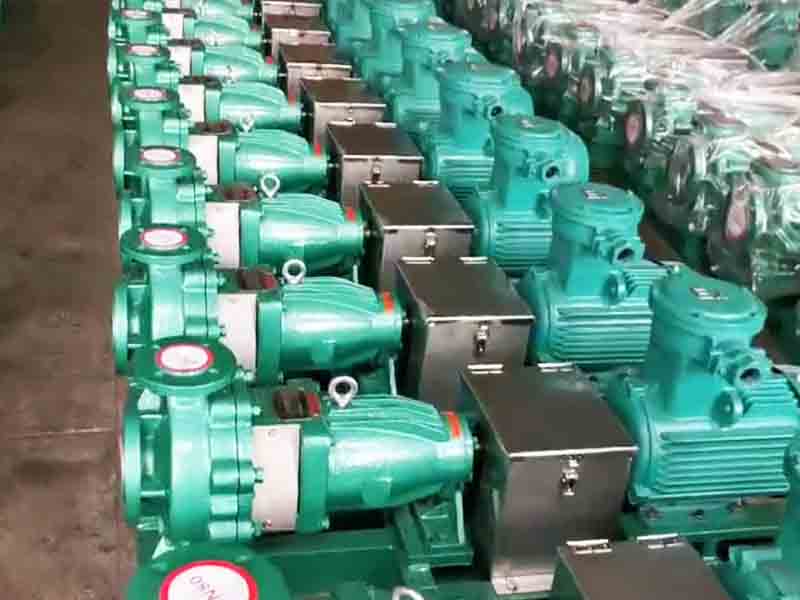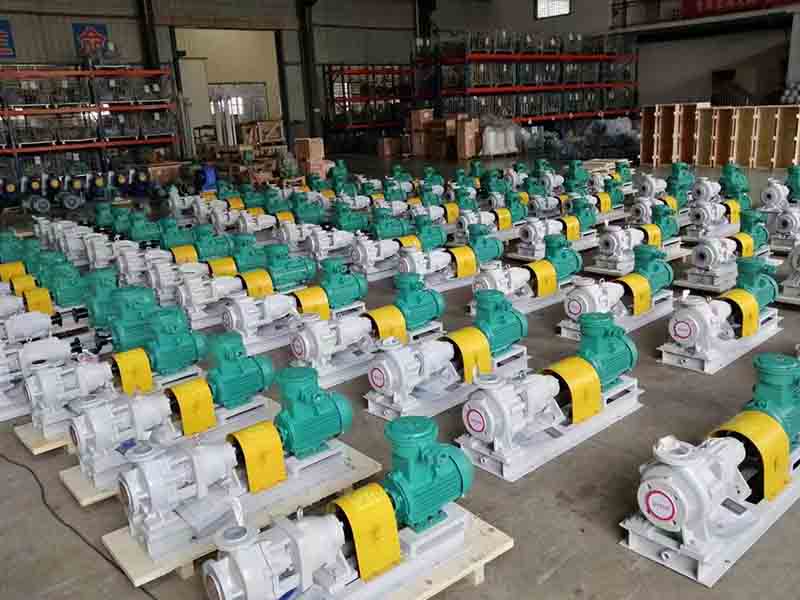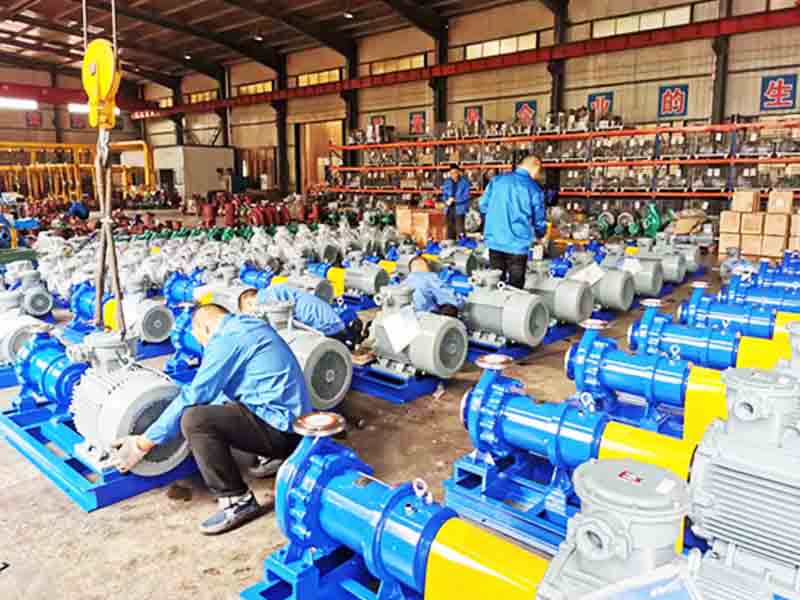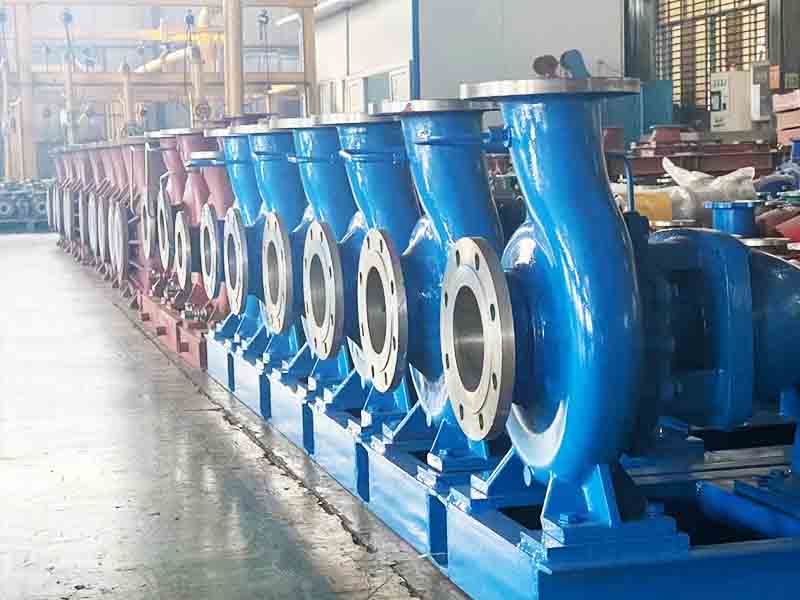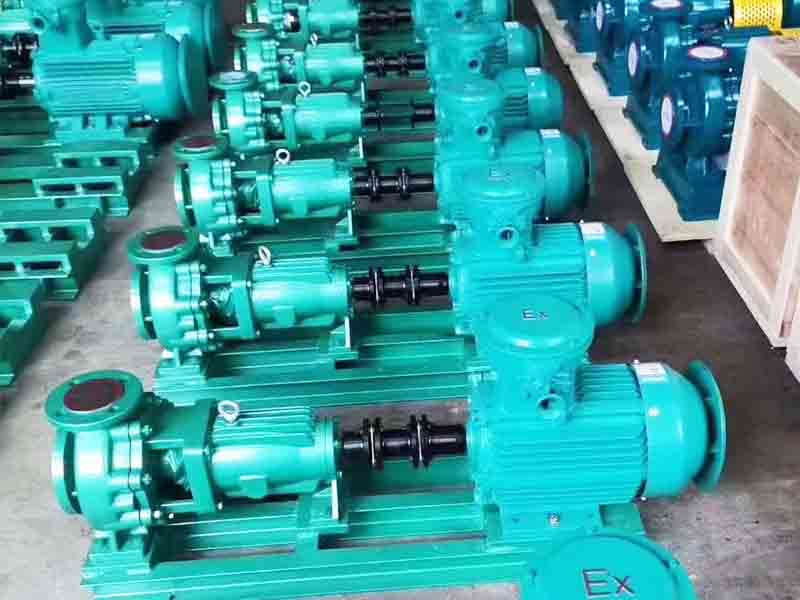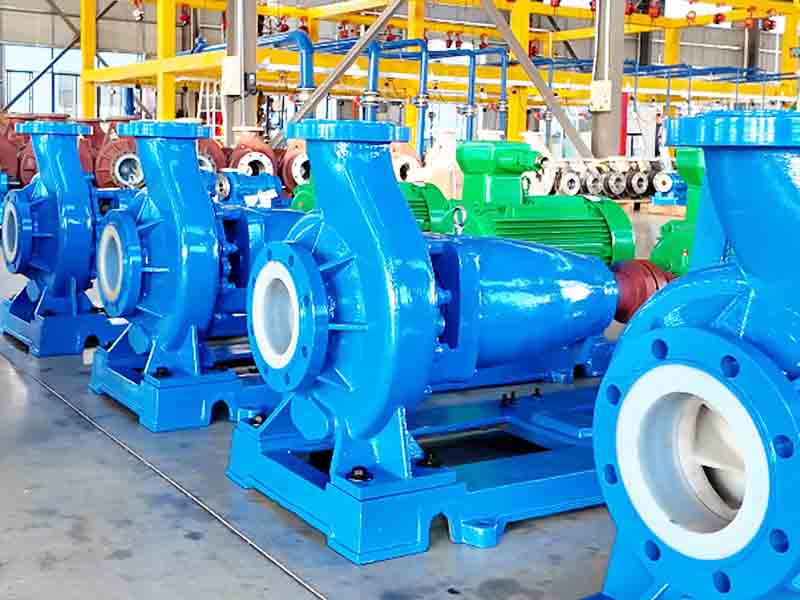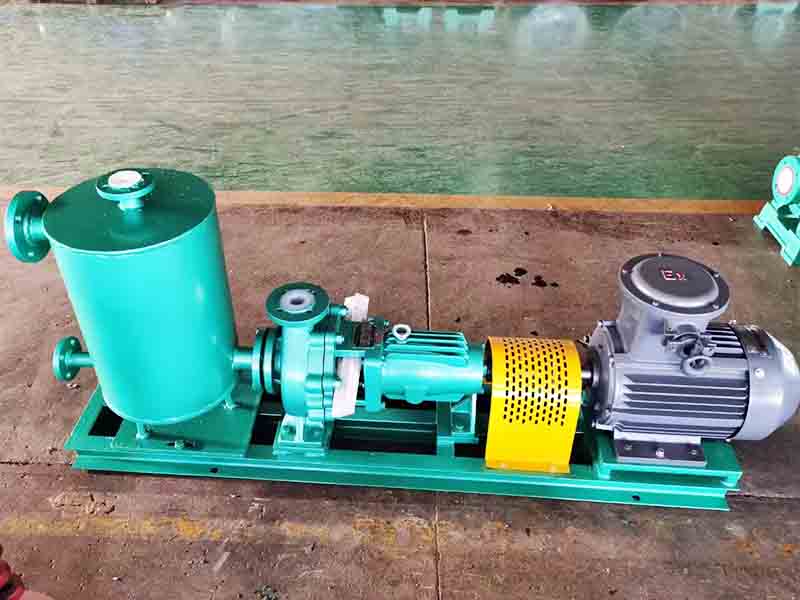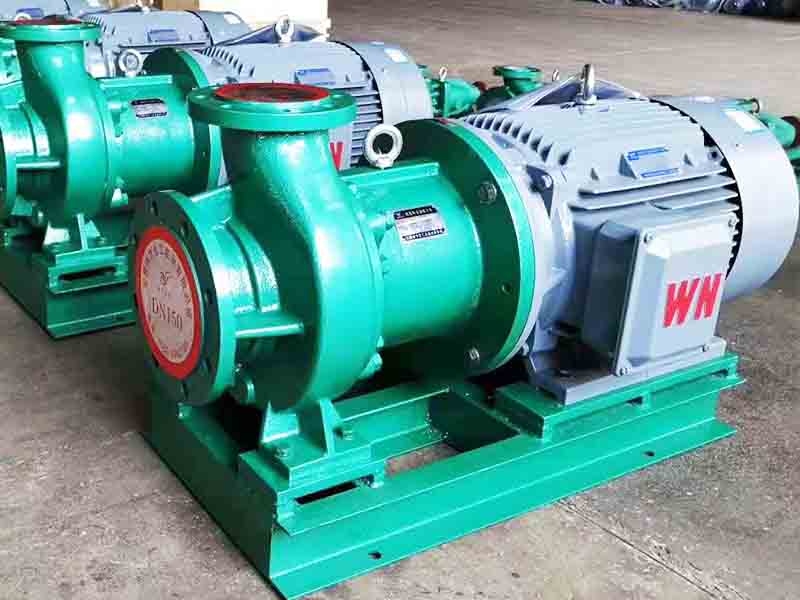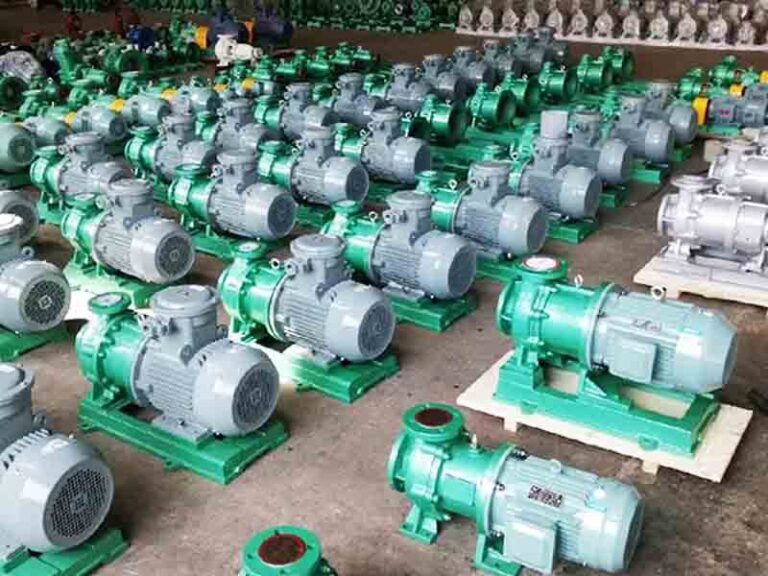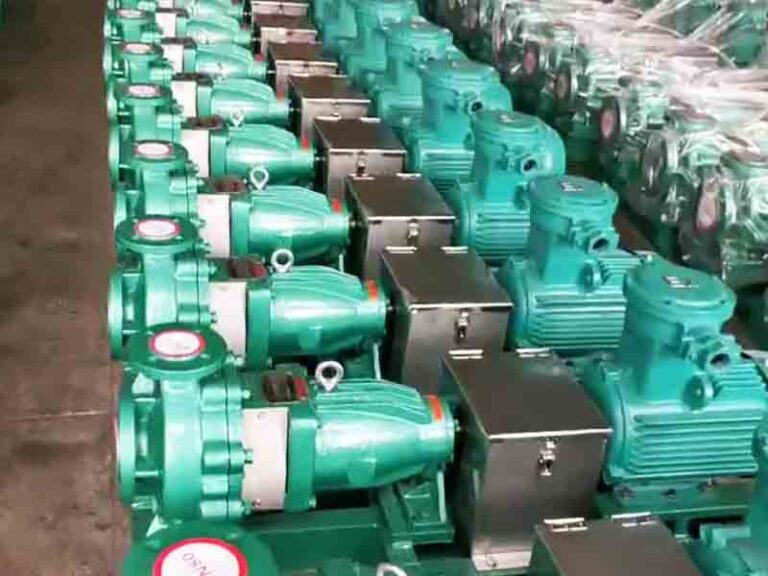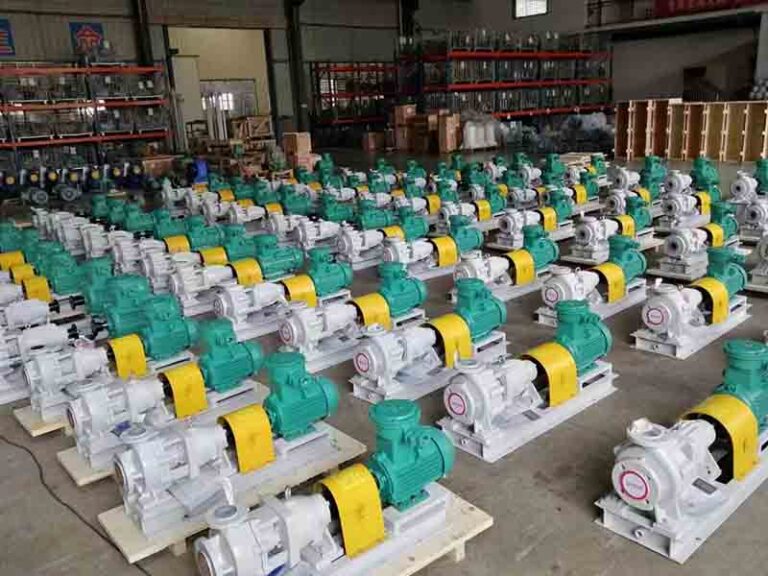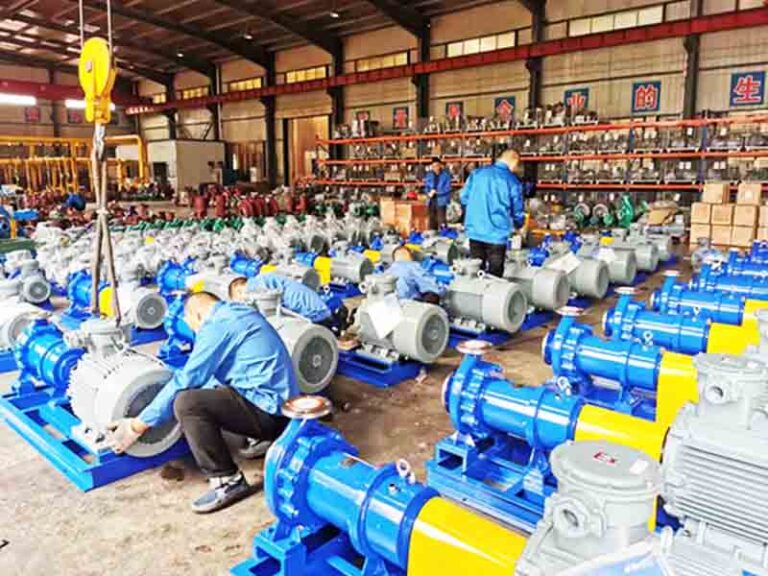Pumps are indispensable equipment in many industries such as oil, gas and chemical. They undertake the critical task of transferring various liquids to ensure the smooth running of the production process. However, with so many types of pumps available in the market, choosing the right one is not an easy task. Two common and widely used pumps are the ANSI pump and the API pump. So when should you choose an ANSI pump and when should you choose an API pump? This requires an in-depth look at the differences between them.
What is an API Pump
API pumps are a special category of centrifugal pumps that are designed, inspected and tested in accordance with the American Petroleum Institute’s API 610 pump standard. This standard guarantees the quality and performance of API pumps. API pumps can be found in refineries and the petrochemical industry. This is because these industries often handle hydrocarbons such as oil, gasoline, natural gas, and various petroleum products, and the API pump’s rugged design provides excellent performance in these complex and demanding applications.
API pumps are available in many different configurations and utilize a variety of pumping mechanisms to meet the needs of different applications. However, API pumps have traditionally been considered conservative (strict) in design, which has resulted in relatively high manufacturing costs.
What is an ANSI Pump
The ANSI pump is a horizontal, single-stage, end-suction centrifugal pump with a cantilevered impeller and pull-back construction. This unique design makes the ANSI pump useful in specific applications. the ANSI pump is designed in accordance with the ASME B73.1 standard, which defines the requirements for ANSI pumps. This standard provides specifications for the performance of the ANSI pump and the manufacturing process.
A significant advantage of the ANSI pump is its low cost. This has resulted in a wide range of applications where temperature and pressure are relatively low, such as the chemical industry, parts of refineries, and the industrial and mining industries. In addition, ANSI pumps are interchangeable between manufacturers and brands, which makes it easy for users to maintain and replace equipment.
Key Differences Between the API and ANSI Pumps
Casing Design Pressure and Temperature Ratings
ANSI Pump Ratings :The ANSI pump has a pressure rating of 300 psig and a temperature rating of 300°F. This rating makes it suitable for use in applications with relatively low pressure and temperature requirements.
API Pump Ratings :In contrast, the API pump is rated for pressures up to 600 psig and temperatures up to 600°F. Its higher ratings allow it to handle more demanding environments, such as high-temperature, high-pressure petrochemical production scenarios.
These different ratings have a significant impact on the application scenarios for both pumps. When selecting a pump, it is important to decide which pump to use based on the pressure and temperature requirements of the actual working environment to ensure safe and stable operation of the pump.
Impellers
ANSI Pump Impellers :The impellers on ANSI pumps are typically open or semi-open and do not have wear rings. This impeller design gives the ANSI pump an advantage when transporting liquids that contain small amounts of solid particles.
API Pump Impellers :API pumps utilize closed impellers with replaceable casing wear rings. The closed impeller improves the efficiency of the pump, while the replaceable wear ring enhances the durability of the pump, enabling it to maintain good performance over long periods of operation.
Differences in impellers directly affect pump performance, wear, and efficiency in different pumping scenarios. For example, the open or semi-open impellers of ANSI pumps are less prone to clogging when pumping liquids containing solid particles, but are relatively inefficient, while the closed impellers of API pumps are better suited to pumping clean liquids and have higher efficiencies, but may require additional pre-treatment measures when faced with liquids containing solid particles.
Bearing housings
API Pump Bearing Housings :API pump bearing housings are typically of a more robust steel design and are often equipped with cooling jackets, which provide greater cooling capacity and are better able to cope with high temperature conditions. This allows the bearings to be well protected when the API pump is operated in a high temperature environment, thus ensuring stable pump operation.
ANSI Pump Bearing Housings :The bearing box design of the ANSI pump is relatively simple compared to the API pump, and is less capable of handling high temperatures. This limits the range of applications for the ANSI pump in high temperature environments.
The difference in the bearing housing has a significant impact on the pump’s ability to operate at different temperatures. In high temperature environments, API pumps are able to maintain stable operation due to their superior bearing housing design, whereas ANSI pumps may fail due to insufficient bearing housing heat dissipation.
Mounting
ANSI Pump Mounting :ANSI pumps are typically foot mounted. However, this type of mounting is problematic at elevated or changing temperatures. Due to thermal stress, the pump may become misaligned during operation, which can significantly shorten its service life.
API Pump Mounting Methods :API pumps are centerline mounted. This mounting method effectively counteracts the effects of thermal expansion, minimizes the stress on the pump casing, and ensures that the pump maintains a good operating condition under various temperature conditions.
It should be noted that some ANSI pumps are also centerline mounted. In general, however, foot mounting is still the dominant mounting method for ANSI pumps.
Back Cover Arrangement
ANSI Pump Back Covers :In ANSI pumps, the back cover and gaskets are secured to the pump housing by cast iron bearing carrier adapters. This type of mounting is somewhat adequate for the operational requirements of the ANSI pump.
API Pump Back Covers: API pumps have back covers that are bolted directly to the pump casing with metal-to-metal mating compression washers. This arrangement provides better sealing performance and ensures that the pump will not leak during operation.
Differences in the rear cover arrangement have a significant impact on sealing performance and long-term durability; API pumps have a more reliable seal, making them safer for transporting flammable, explosive, or toxic liquids, while ANSI pumps have a simpler rear cover arrangement, which has less sealing performance and durability.
Applications and Uses for API Pumps
Refinery applications
In the refining industry, API pumps are the first choice for a wide range of challenging applications. Horizontal, end-suction, cantilevered pumps, for example, are designed with housings, bearing housings, pump foot support methods, and pull-back arrangements to achieve the highest levels of efficacy and reliability under the complex conditions found in oil refineries. At the same time, API pumps provide effective discharge control and safe handling of fluids that may cause damage to the environment.
Other industry application
The API 610 standard is extremely demanding given the demanding nature of oil and gas applications. The standard is based on sound engineering verification and operational practices, resulting in products that meet the standard’s outstanding advantages of high safety and reliability, long life, and ease of installation and maintenance. Therefore, API pumps are not only widely used in the oil refining and petrochemical industry, but also play an important role in coal chemical industry, thermal power plants, nuclear power plants and other key occasions of the equipment.
However, it cannot be ignored that the manufacturing cost of API pumps is always much higher than that of pumps manufactured according to HI standards. Despite their excellent performance, the higher cost limits the range of applications to some extent.
Applications and Uses for ANSI Pumps
Transport liquid type substances
ANSI pumps are commonly used for conveying low-viscosity fluids such as water, alcohols, and other less corrosive fluids. ANSI pumps can also convey liquids with or without solids by using different impeller types. In addition, ANSI pumps can be constructed of high hardness and alloy materials for more demanding and corrosive environments.
Other Industry applications
The ANSI pump has been an important piece of equipment in the chemical industry for decades. It is also widely used in food processing, pulp and paper, textiles, mining, general manufacturing, and other typical process plants. These industries are often sensitive to the cost of pumps, and the low cost and good versatility of the ANSI pump make it an ideal choice for these industries.
In recent years, there has been increasing discussion about adapting the ANSI pump to expand its use in the oil and gas industry, which is typically the application area for API pumps. However, in order to meet the environmental requirements of oil and gas industry sites, ANSI pumps must meet additional criteria, such as reliability under operating conditions. This extended application is still in the exploration and research phase.
Advantages and Disadvantages of API Pumps
Advantages of API Pumps
Improving Industrial Conveying Efficiency: API centrifugal pumps are characterized by high efficiency and reliability. Their efficient operation significantly reduces energy consumption during industrial transportation, thereby reducing operating costs. At the same time, high reliability also ensures the continuity of the production process and avoids production interruptions caused by pump failures.
Adapting to harsh operating environments: API centrifugal pumps are able to adapt to harsh operating environments, as they are designed and manufactured in accordance with strict API standards. Whether it is high temperature, high pressure, or strong corrosive environment, API pumps are able to operate stably and have a long service life.
Easy maintenance and replacement: API centrifugal pumps are interchangeable in terms of dimensions, interfaces and performance parameters. This makes it easier for users to carry out equipment maintenance and replacement, quickly find the right parts, and reduce equipment downtime.
Improved industrial safety: API centrifugal pumps are designed and manufactured with safety in mind. Its structural design and choice of materials can guarantee the safety of the equipment during operation and effectively protect the safety of the operator and the surrounding environment.
Disadvantages of API pumps
Higher installation and operating costs: API pumps are expensive to manufacture, not only in terms of the purchase price of the equipment, but also in terms of subsequent installation and commissioning costs. In addition, due to their high operating efficiency and reliability requirements, maintenance and energy consumption costs during operation are relatively high.
Less versatile than ANSI pumps: Compared to ANSI pumps, API pumps are less versatile and have a narrower range of applications. At the same time, due to the strict production standards and relatively small number of manufacturers, the supply of the pump is not as plentiful as that of the ANSI pump, making it relatively difficult to obtain.
Advantages and Disadvantages of ANSI Pumps
Advantages of ANSI Pumps
Lower Cost than API Pumps: One of the most significant advantages of ANSI pumps is their relatively low cost. Both the purchase cost of the equipment and the subsequent maintenance and operating costs are significantly lower than for the API pump. This gives the ANSI pump a significant advantage in cost-sensitive industries.
Versatile Pump System, Easy to Configure for Different Applications: The ANSI pump is highly versatile, and its pump system can be flexibly configured to meet the needs of different applications. Users can choose appropriate impellers, materials and accessories according to the nature of the actual conveyed liquid, flow rate and pressure requirements, etc., in order to meet diversified application scenarios.
High tolerance to solids transported with the fluid: As mentioned earlier, the impeller design of ANSI pumps makes them highly resistant to solids transported with the fluid. The ANSI pump is less prone to clogging and maintains stable operation when transporting fluids containing small amounts of solid particles.
Simple and straightforward interchangeability between pump brands and manufacturers: ANSI pumps are interchangeable between brands and manufacturers. This means that users have more choices when selecting parts or replacing equipment, and do not have to be limited to a specific brand or manufacturer, reducing purchasing and maintenance costs.
Disadvantages of the ANSI Pump
Poor Handling of Thick, Viscous Fluids: The design features of the ANSI pump dictate that it performs poorly when handling thicker, more viscous fluids. Due to the limitations of its impeller and pump body structure, when conveying such fluids, the efficiency of the pump will be greatly reduced, and may even be clogged.
ANSI Pumps Cannot Be Used to Replace Other Types of Centrifugal Pumps: ANSI pumps cannot be used to replace other types of centrifugal pumps in certain application scenarios. For example, where high head, high flow rates, or special media are required, the ANSI pump may not be able to meet the requirements and a more suitable centrifugal pump type must be selected.
Choosing a Pump:API or ANSI
When deciding whether to use an API or ANSI pump, the experience and judgment of a mechanical expert plays a critical role. These specialists, with their extensive knowledge and long experience, are able to take into account a variety of factors in order to select the type of pump that is best suited to the specific application.
Application Scenarios where API pumps are preferred
Many experienced mechanical engineers, especially in situations where toxic, flammable or explosive liquids are handled, prefer pumps designed and manufactured in accordance with the API 610 standard. Specifically, these scenarios typically include pumps with heads in excess of 106 meters, outlet flange sizes greater than 4 inches and pumping media temperatures in excess of 149°C, or drive power in excess of 74 kW, suction pressures in excess of 516 kPa-g, rated flow rates in excess of the optimum point-of-efficiency flow rate, and pump speeds in excess of 3600 rpm. In these complex and hazardous conditions, the high performance and safety of API pumps are essential to the smooth running of the production process.
Suitable for ANSI pump application scenarios
The ANSI pump may also be a suitable choice in cases where there is little deviation from the operating conditions, or when the pump manufacturer can demonstrate extensive experience with ANSI pumps in similar or more severe conditions. In this case, the advantages of the ANSI pump, such as low cost and versatility, can be fully utilized.
Conclusion
In summary, the choice of an API or ANSI pump is a case-by-case consideration. While API-compliant pumps are traditionally considered to be superior in terms of performance and safety, in practice, ANSI or ISO pumps can be a satisfactory choice, provided they are carefully selected, properly installed, and maintained. Before making a decision, users should evaluate their application needs, budgetary constraints, and maintenance capabilities to ensure that they select the best pump for their needs.
If you would like more detailed information about the pump, contact us for more guidance.



